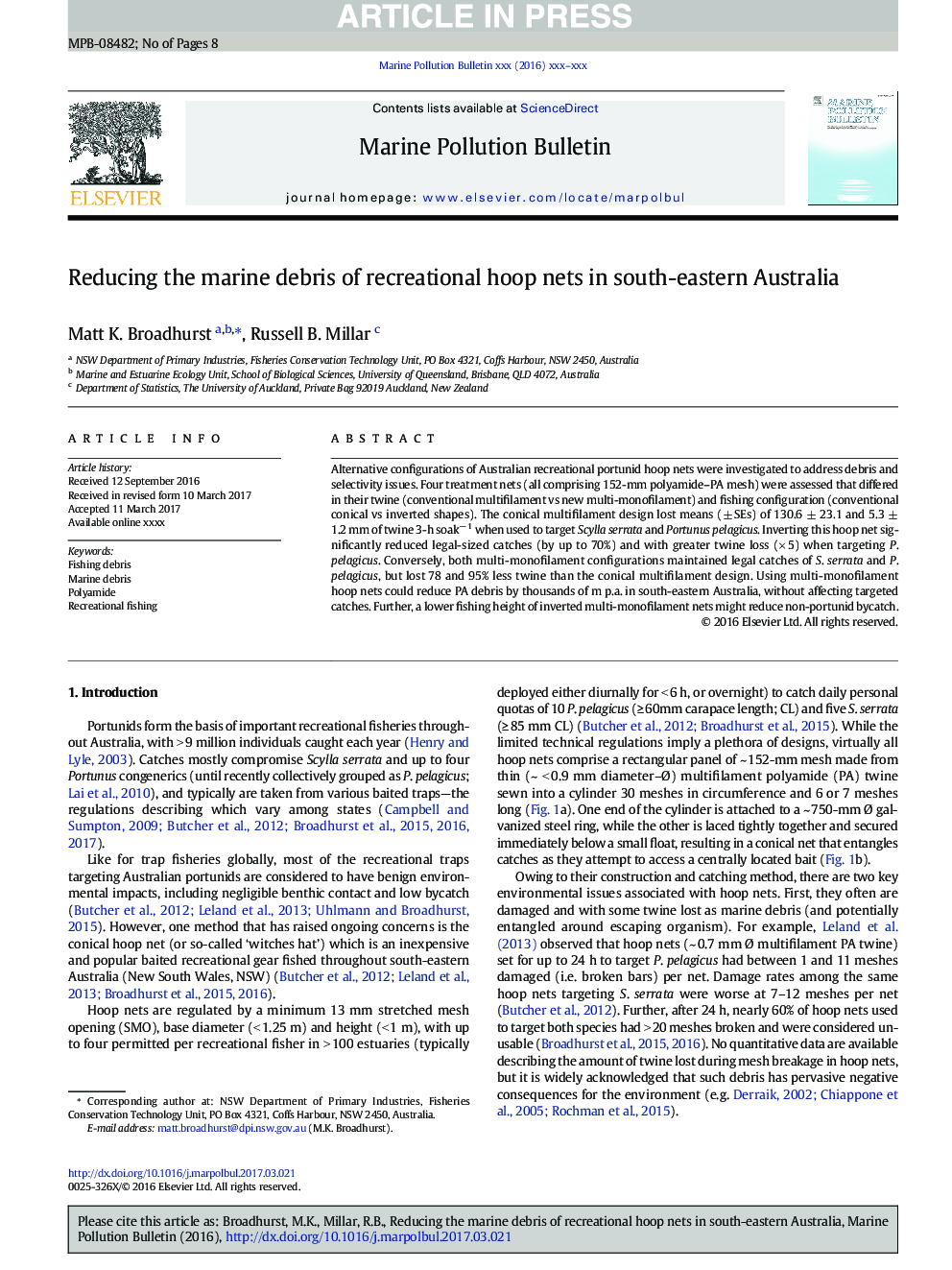| Article ID | Journal | Published Year | Pages | File Type |
|---|---|---|---|---|
| 5757927 | Marine Pollution Bulletin | 2017 | 8 Pages |
Abstract
Alternative configurations of Australian recreational portunid hoop nets were investigated to address debris and selectivity issues. Four treatment nets (all comprising 152-mm polyamide-PA mesh) were assessed that differed in their twine (conventional multifilament vs new multi-monofilament) and fishing configuration (conventional conical vs inverted shapes). The conical multifilament design lost means (± SEs) of 130.6 ± 23.1 and 5.3 ± 1.2 mm of twine 3-h soakâ 1 when used to target Scylla serrata and Portunus pelagicus. Inverting this hoop net significantly reduced legal-sized catches (by up to 70%) and with greater twine loss (à5) when targeting P. pelagicus. Conversely, both multi-monofilament configurations maintained legal catches of S. serrata and P. pelagicus, but lost 78 and 95% less twine than the conical multifilament design. Using multi-monofilament hoop nets could reduce PA debris by thousands of m p.a. in south-eastern Australia, without affecting targeted catches. Further, a lower fishing height of inverted multi-monofilament nets might reduce non-portunid bycatch.
Related Topics
Physical Sciences and Engineering
Earth and Planetary Sciences
Oceanography
Authors
Matt K. Broadhurst, Russell B. Millar,
